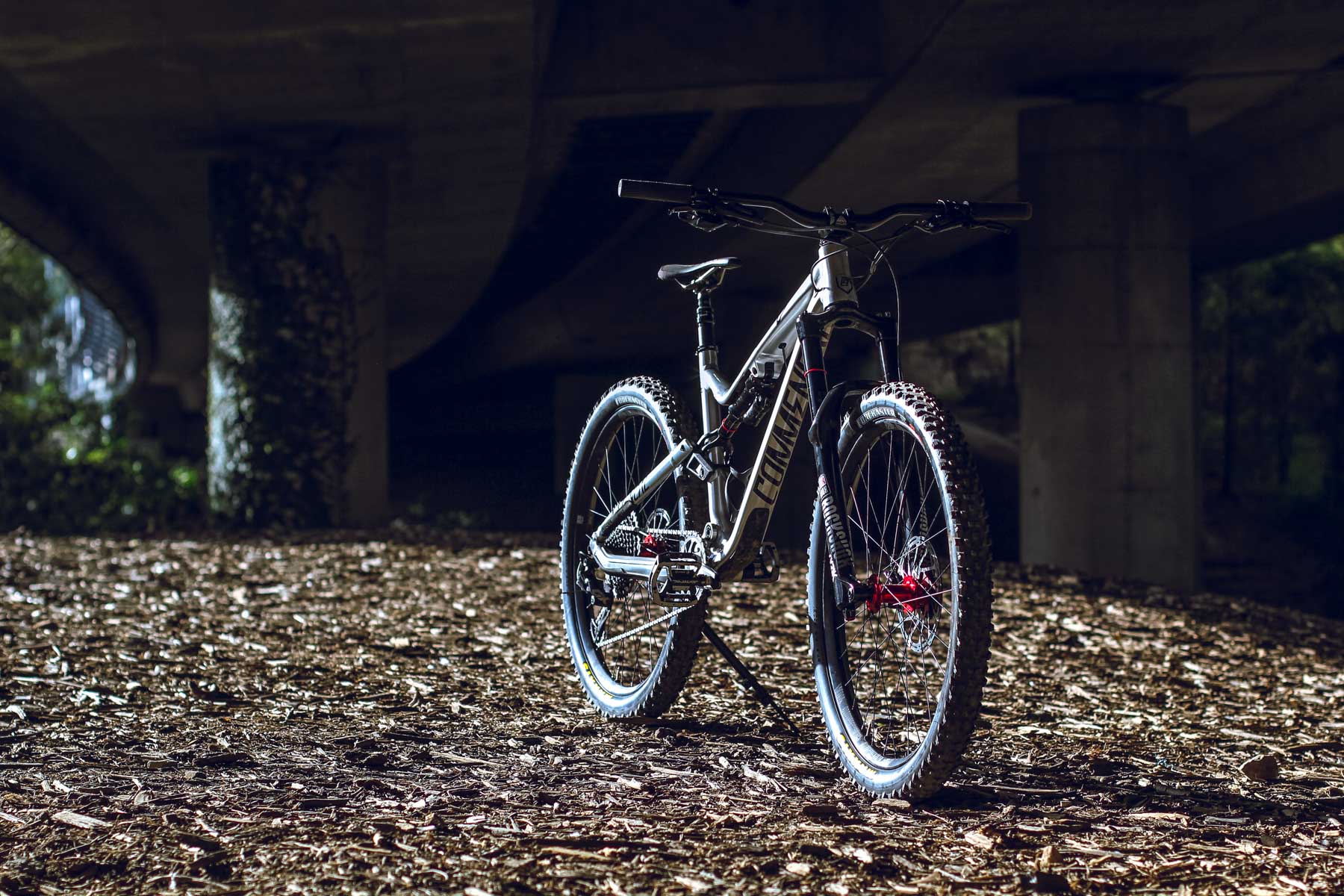The obligatory suspension fiddling:
With sag gradients on the fork and shock, getting your baseline sag set is fuss free, but we’re still making refinements to the setup. After a bit of internet trawling, we initially set the rear end up with about 25% sag (some reviewers out there felt the Meta rode best with less sag than would be common for this style of bike). We’ve subsequently dropped the shock pressure to give about 30% sag, and things feel a lot more settled now in our opinion.


We’re loving the performance of the Lyrik once again. This fork dominates, it looks bad-ass with its super wide stance thanks to the Boost hub spacing and it just chomps up the ugliest terrain. As we’ve noted below, the long 170mm-travel fork is tall, so we were planning on running it at 25% sag and adding some Bottomless Tokens to the keep the stroke supportive (the Meta comes with just one Bottomless Token fitted).



Instead, we picked up a neat suspension mod from SD Components, the Dynamic Volume Chamber. This cool little unit allows you to independently adjust the main air spring and the end-stroke, so you can get a buttery soft initial spring curve, and still have good support in the mid/end-stroke. We’ve only just fitted it, so we can’t comment on performance yet, but it adds a bit of ‘factory’ cool we think!

The rear shock doesn’t offer a lot of adjustability, just air pressure and rebound. With the remote lockout, you lose any kind of independent low-speed compression adjustment in favour of the convenience of being able to lock things out on-the-fly. We’re still on the fence about this… We’ve found the lockout useful, as the bike isn’t the most willing climber, but you do sacrifice quite a lot of rear wheel grip as soon as you hit that lockout lever. It’s best used on smooth fire roads or on the tarmac.

High rise, maybe a bit tall for shorties:
With its 30mm rise bar, the Meta is pretty tall up front, especially for a shorter rider like our tester. When the trails point down steeply, it makes for a very confident position, at the expense of being a little ungainly on technical climbs. You’ve got to really consciously keep the weight over the front end to stop it lifting and wandering when negotiating steep pinches. We’ll be experimenting with the fork setup, running slightly more sag (and a more aggressive ramp-up) to see if this improves things. We might look for a bar with less rise too, 15-20mm would be ideal.

Rubber choices:
You’ll never hear us complain about the performance of Maxxis Minions. The stock tyres on the Meta are some of the grippiest and most predictable going, but we’ve just received some new 2.6″ Maxxis Forekasters to try, so on they go! The Forekasters are a little lighter than the Minions (785g vs 960g) and we’ll welcome the reduced rotating weight, but we hope they can match the Minions in terms of reliability, durability and traction.



CushCore frustrations:
We also took the opportunity of swapping out the tyres to try and fit the new Cushcore system. Note we said ‘try’…. While the in-tyre damping/rim protection system sounds very promising, fitting it proved too time consuming and we gave up after an hour of fighting it. We did try to follow the instructions, but perhaps we missed a step? We’ll return with a cold drink, plenty of spare time, and a better frame of mind and try to install it!



